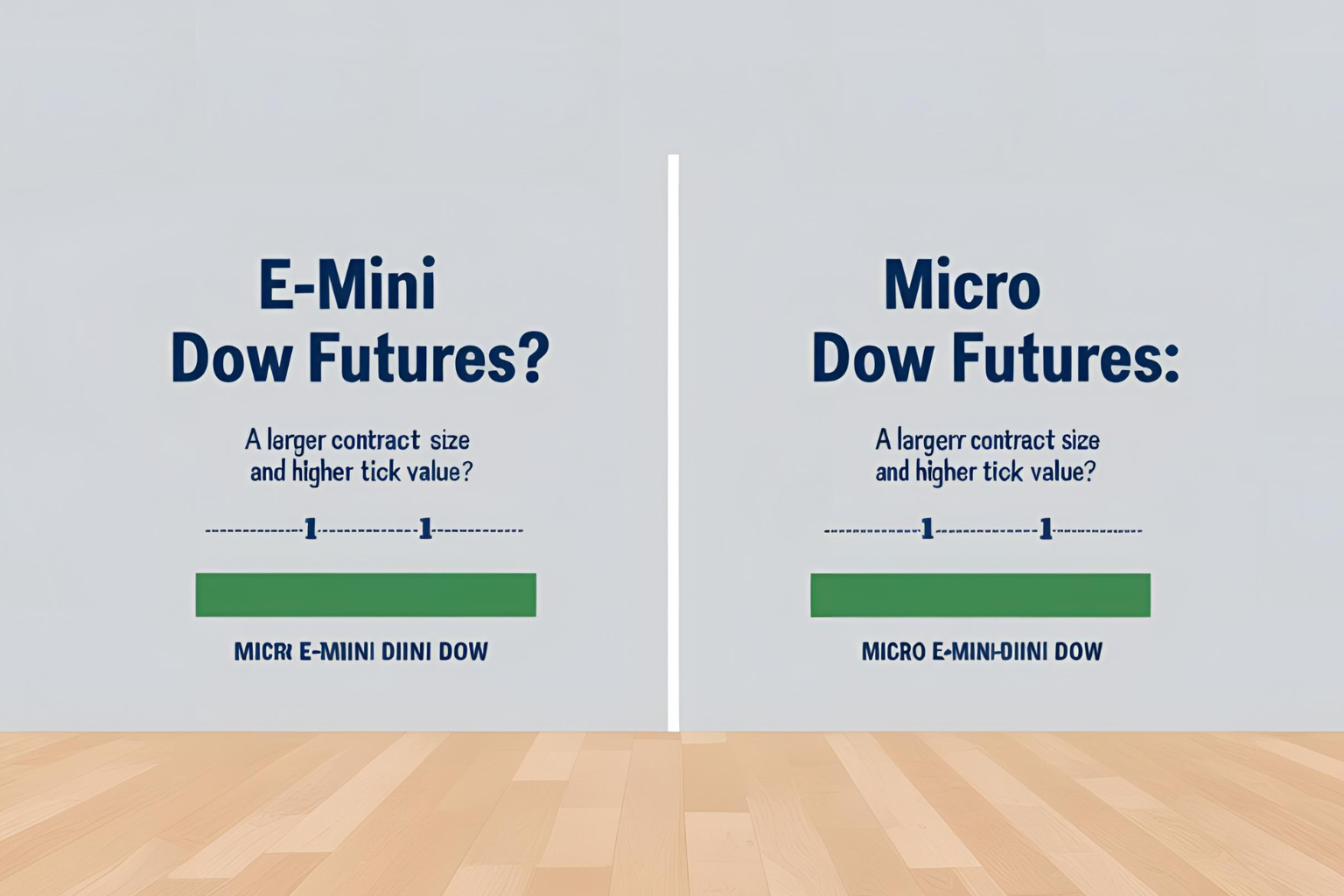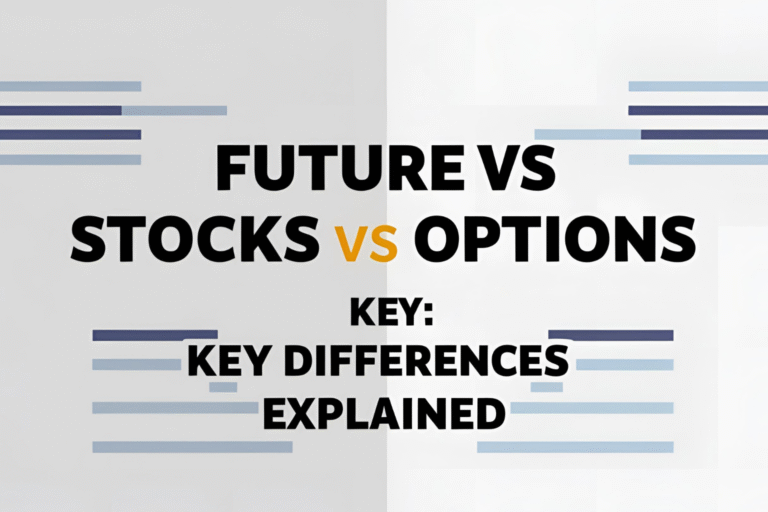E-mini vs Micro Dow Futures: What’s the Difference?
Introduction
If you’re looking to trade Dow futures, you’ll quickly come across two popular contract types—E-mini and Micro Dow futures. Both track the same Dow Jones Industrial Average, but they differ in size, margin, and risk. In this guide, we’ll break down the E-mini vs Micro Dow futures comparison to help you choose the right one based on your experience and trading goals.
What Are E-mini and Micro Dow Futures?
Both contracts are derivatives based on the DJIA (Dow Jones Industrial Average) index:
- E-mini Dow Futures (YM):
A smaller version of the standard Dow contract, widely used by individual traders.
Ticker symbol: YM
Contract size: $5 × Dow Index - Micro E-mini Dow Futures (MYM):
An even smaller contract, ideal for beginners or small accounts.
Ticker symbol: MYM
Contract size: $0.50 × Dow Index
Key Differences: E-mini vs Micro Dow Futures
| Feature | E-mini Dow Futures (YM) | Micro E-mini Dow Futures (MYM) |
|---|---|---|
| Contract Size | $5 × Dow Index | $0.50 × Dow Index |
| Ticker Symbol | YM | MYM |
| Minimum Tick Value | $5.00 | $0.50 |
| Margin Requirement | Higher (approx. $7,000+) | Lower (approx. $700+) |
| Best For | Active traders | Beginners, small accounts |
Note: Margin requirements vary by broker and market conditions.
Which One Should You Trade?
Here’s how to decide:
- Choose E-mini if:
- You have experience in futures trading
- You want higher exposure
- You can manage larger risk
- Choose Micro if:
- You’re new to futures
- You want to trade with a small account
- You prefer lower volatility and more flexibility
Why Micro Dow Futures Are Great for Beginners
- Lower cost per tick means smaller profits/losses.
- Less capital required to get started.
- Ideal for learning how futures behave without high financial pressure.
Many traders use Micro contracts to practice live trading before moving to larger contracts like E-minis.
Can You Scale with Micro Contracts?
Yes. One benefit of Micro futures is that you can scale your position up or down easily. For example, trading 10 Micro contracts is equivalent to 1 E-mini. This flexibility helps in:
- Risk management
- Trade sizing
- Partial exits
Conclusion
Understanding the difference between E-mini and Micro Dow futures is essential when choosing the right instrument for your trading strategy. Micro contracts offer a safer starting point for new traders, while E-minis provide more opportunity for experienced participants. Choose based on your skill level, capital, and risk appetite.
FAQs
Q1. Are Micro Dow futures less risky than E-minis?
Yes, because of their smaller size, they carry less financial risk per tick movement.
Q2. Can I trade both E-mini and Micro contracts on the same platform?
Absolutely. Most brokers that offer futures trading support both YM and MYM.
Q3. How much money do I need to start trading Micro Dow futures?
Around $700–$1,200 depending on your broker’s margin requirements.
Q4. Is the liquidity good in Micro contracts?
Yes. While not as high as E-minis, Micro Dow futures have good liquidity and tight spreads.
Q5. Can I switch from Micro to E-mini later?
Yes. Many traders start with Micro contracts, gain experience, and then upgrade to E-mini once they’re comfortable.

